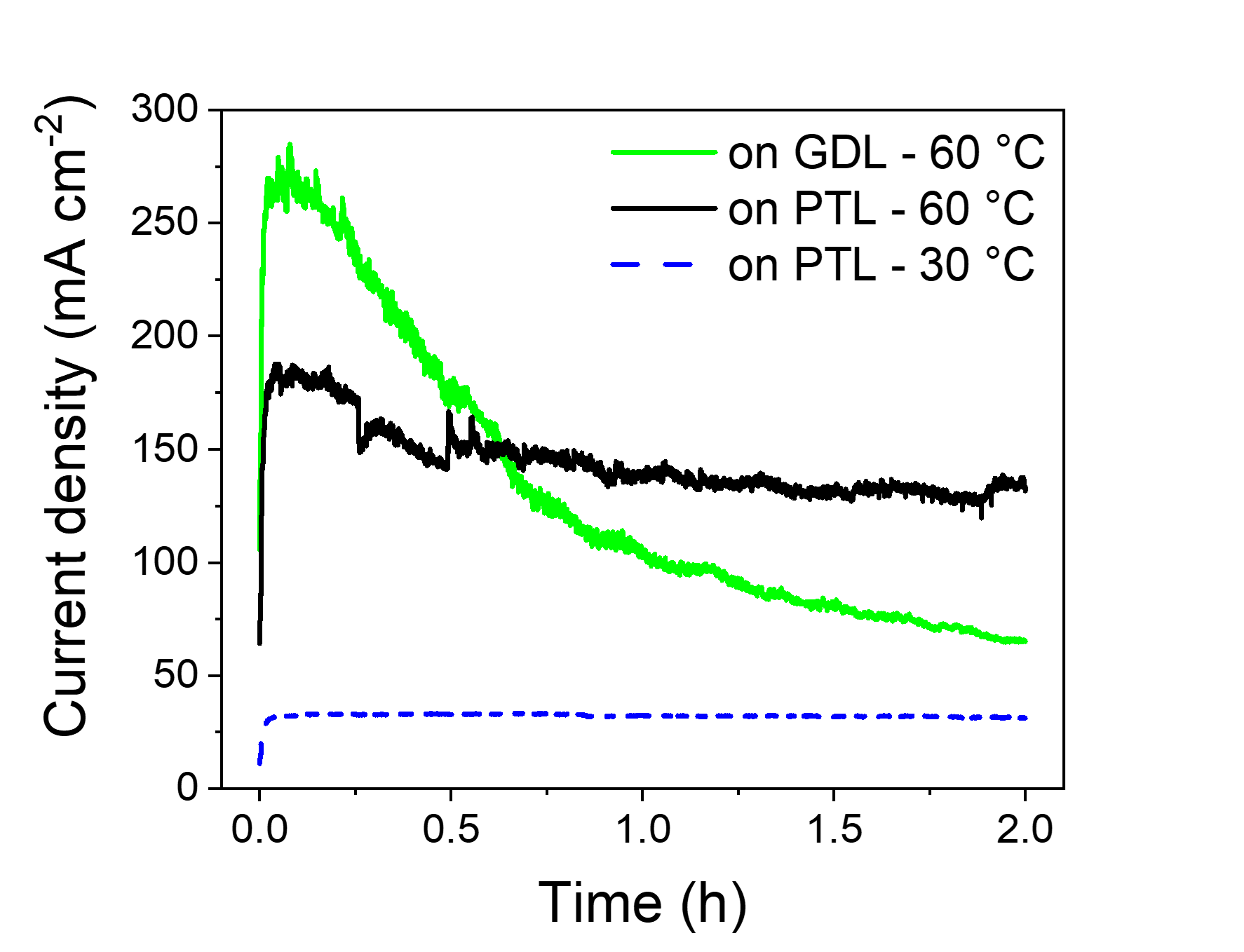OER Catalyst’s Transport Layer Matters: Stability Comparison Between C‑Based GDL and Ti‑Based PTL
Currently, significant efforts are taken to find the most active and stable electrochemical oxygen evolution reaction (OER) catalyst diverting from critical raw material. However, one also needs to consider new catalyst screening methods, especially with respect to stability investigations where rotating disk electrode (RDE) studies are not suitable [1]. Recently, we introduced a gas diffusion electrode (GDE) setup as a new testing platform for OER catalysts [2]. This methodology stems from fuel cell approach using carbon gas diffusion layers (GDLs) as transport layer to bring the reactant to the catalyst. However, carbon is not stable under the harsh OER conditions, thus water electrolyser uses porous transport layers (PTLs) of titania instead. In the current work, we tested the influence of the transport layer on the stability of a highly active Ir0.7Ru0.3Ox catalyst on homemade antimony doped tin oxide (ATO) support in a GDE setup. The test consisted in holding the potential at 1.6 V for 2 h. Firstly, the stability of the catalyst on a GDL or a PTL was compared at 60 °C. Rapid decline of the GDL-catalyst activity was observed, while the PTL-catalyst activity demonstrates a rather stable behavior (Fig. 1). We attribute this fast activity drop to the degradation of the GDL itself. Moreover, the activity at 30 °C of the PTL-catalyst was compared to literature data on RDE setup [1]. In the RDE setup, a breakdown is observed after only 30 min when applying a constant current density. In contrast, PTL-catalyst tested in the GDE setup exhibits no activity loss during 2 h under similar conditions.
Figure 1: Potentiostatic stability transients at 1.6 V of Ir0.7Ru0.3Ox/ATO deposited on C-based GDL (green full) and on Ti-based PTL at 60 °C (black full) and 30 °C (blue dashed).

[2] Johanna Schröder et al., JACS Au, 2021, 1, 247-251